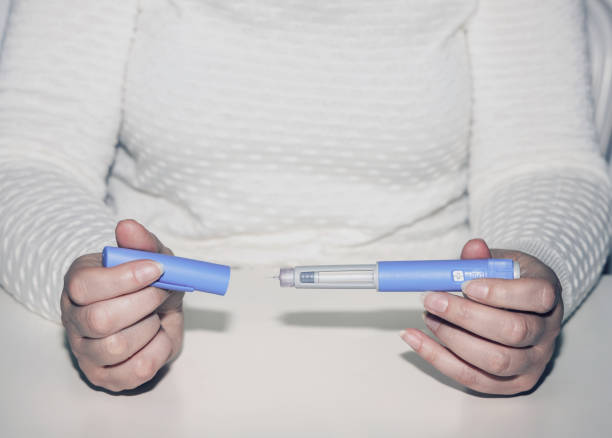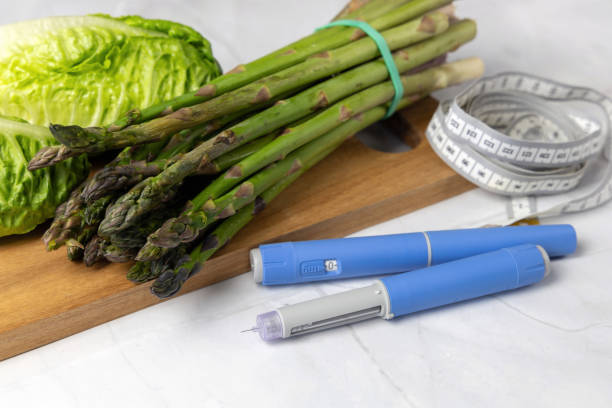When starting any new medication, you need to be aware of the possible side effects. GLP-1 medications are no exception. Before starting with GLP-1 therapy it would be helpful to read this post to know the potential side effects you might experience.

Mild Side Effects of GLP-1 Therapy
GLP-1 medications can cause several mild side effects, especially when you first start taking them. These side effects are often temporary and may diminish over time:
- Nausea
- Vomiting
- Heartburn
- Burping
- Diarrhea
- Abdominal pain
- Constipation
Serious Side Effects of GLP-1 Treatment
Be very vigilant and seek medical attention if you experience any of the following:
- Pancreatitis – inflammation of the pancreas, characterized by upper abdominal pain that radiates to the back.
- Anaphylaxis – a severe allergic reaction causing swelling of the face and throat, rash, difficulty breathing and other life-threatening symptoms.
- Hypoglycemia – dangerously low blood sugar levels with symptoms like shakiness, hunger, dizziness, sweating, headache, confusion, rapid heart rate and blurred vision.
If you notice any signs of a severe reaction, seek emergency medical care.
Serious Gastrointestinal Problems Associated with GLP-1 Medications
New research indicates that GLP-1 medications can sometimes lead to severe gastrointestinal issues. While these medications commonly warn about nausea and vomiting, more serious complications have been observed as their usage has increased.
Intestinal Blockage and Pancreatitis
Recent studies published in the medical journal JAMA have highlighted a connection between GLP-1 medications and a higher risk of pancreatitis and intestinal blockage (ileus).
Dr. Mahyar Etminan and his team focused on gastrointestinal issues among patients taking GLP-1s for obesity, as there is less data available for these patients compared to those with diabetes. The study analyzed 16 million patient prescriptions and identified higher risks for certain gastrointestinal problems among GLP-1 users.
The research found that patients on GLP-1 medications had a significantly higher risk of developing the following conditions:
A 9.09 times higher risk for pancreatitis (painful inflammation of the pancreas)
A 4.22 times higher risk for intestinal blockage, a serious condition where the intestines cannot pass contents.
A 3.67 times higher risk for Gastroparesis, where the stomach takes way too long to empty.
While these adverse effects are still uncommon, they underscore the importance of monitoring and regular follow-ups with your healthcare provider.

How to Manage Minor Gastrointestinal Side Effects of GLP-1 Medications
GLP-1 receptor agonist medications, including Ozempic, Wegovy, and Mounjaro, are known to cause gastrointestinal (GI) side effects and research shows that up to 50% of patients experience these.
The GI side effects of GLP-1 treatment are often related to the medication type and dosage. They usually occur when treatment begins or when the dose is increased, but they often lessen as the body adjusts.
Here are some tips for managing these side effects:
Managing Nausea
Stay well-hydrated by drinking plenty of water and sugar-free beverages throughout the day. Remember to eat slowly and stopping when you feel satisfied. Consuming smaller meals more frequently can also help by reducing the digestive load on your stomach and stabilizing blood sugar levels. Also, it’s important to avoid spicy and fatty foods, as they can slow digestion and irritate your stomach.
Avoid drinking fluids with meals if you experience severe nausea and instead, drink fluids 30-60 minutes before or after meals. Ginger and peppermint teas can be soothing so consider drinking tea too.
Managing Constipation
To alleviate constipation, be sure to drink plenty of water or sugar-free beverages. You should also increase your fiber intake by eating more whole grains nd aim for at least 4 grams of dietary fiber per serving. If you’re struggling to add fiber to your diet, consult your doctor or dietitian about using fiber supplements.
Managing Diarrhea
Sip fluids like water, broth, and low-sugar electrolyte beverages throughout the day to stay hydrated when you have diarrhea. Eat small, frequent meals and stay away from caffeine, lactose, sugary drinks, alcohol and beverages sweetened with sugar alcohols.
By following these tips, you can better manage the gastrointestinal side effects of GLP-1 medications and improve your overall treatment experience.